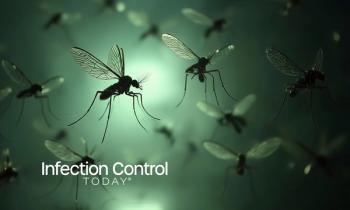
Researchers Develop a Better Flu Vaccine
Johns Hopkins Bloomberg School of Public Health researchers say they have developed a method that could make a nasal spray flu vaccine effective for those under 2 and over 49 – two groups for which the vaccine is not approved. By studying the weakened flu virus that is the basis for the nasal spray vaccine in cells from human nasal and sinus cavities, the researchers say they have determined that the virus can be weakened (for young children) or strengthened (in older people) enough to create an appropriate immune response in people of all ages. A report on the findings is published online in the journal Vaccine.
“We think we can use our molecular, rational design approaches to make a better flu vaccine for people who really need it,” says study leader Andrew Pekosz, PhD, an associate professor in the Department of Molecular Microbiology and Immunology at the Bloomberg School of Public Health. “We can do it in a sophisticated and accurate way, not in a blind manner, which is how these vaccines are usually developed.”
Pekosz says he is particularly excited about being able to produce a better vaccine for older people since flu vaccines are less effective in people as they age and because those over the age of 60 are more likely to get the flu and more likely to suffer serious complications. One reason vaccines using weakened flu virus are not used in the elderly is that they have been exposed to many strains of flu virus over the years and have more antibodies in the nasal tract, which can inhibit the weakened flu virus from infecting and stimulating the immune response necessary to protect against the virus.
“We don’t have a really good effective vaccine in the elderly,” Pekosz says. “Even the injectable version doesn’t work as well in that population. And they’re the ones who need it the most. We hope our research can get us closer to having effective flu vaccines for any age.”
Children ages six months to two years can receive an injectable flu vaccine, but the nasal spray vaccine is recommended in children between the ages of two and eight because it is believed to give better protection than the shot.
For their research, Pekosz and his team, using human nasal tract cells, studied the weakened strain of the flu virus that is used in the nasal spray vaccine and compared its behavior with that of the flu virus itself. Using these nasal tract cells allowed the researchers to determine that the weakened flu virus behaved differently than previous research had suggested. He says that at the end of the life cycle of the weakened virus, virus-infected cells send out harmless, non-infectious particles that immune cells pick up and attack to create antibodies against an actual flu virus that could attempt to infect the body later. This response, however, was not as robust as the researchers imagined.
To create the weakened flu strain contained in FluMist, the brand name of the nasal spray vaccine, nine mutations in the flu virus were made. Researchers previously believed that only five of them were relevant to creating the spray’s immune response, but Pekosz says his new research suggests that all nine may be important. By making adjustments to those mutations, he believes that a stronger vaccine can be made without an increase in side effects. He says that a weaker one can also be made – one that still protects from flu – for children under two.
Currently, there is a flu shot available for the elderly that has twice the dose of a regular flu shot. While this vaccine is more effective in the elderly, Pekosz says there is certainly room for improvement and a need for different vaccine options.
Pekosz says his team is currently collaborating with MedImmune, the makers of the FluMist, to help develop a better vaccine based on these findings. He says if all goes well, he believes there could be a new vaccine to test within six to 12 months for both the oldest and youngest.
“Restricted Replication of the Live Attenuated Influenza A Virus Vaccine during Infection of Primary Differentiated Human Nasal Epithelial Cells” was written by William A. Fischer II, Landon S. King, Andrew P Lane and Andrew Pekosz.
The study was supported by funds from the National Institutes of Health’s National Institute of Allergy and Infectious Diseases (R01AI097417, HHSN272201400007C); the National Institute on Aging (R03AG045088); the National Center for Advancing Translational Sciences (KL2TR001109) and the IDSA Young Investigator Award in Geriatrics.
Source: Johns Hopkins Bloomberg School of Public Health
Newsletter
Stay prepared and protected with Infection Control Today's newsletter, delivering essential updates, best practices, and expert insights for infection preventionists.





